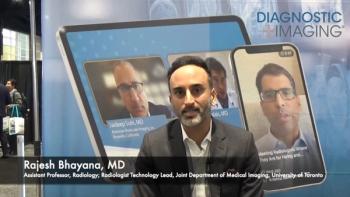
Podcast: Benefits of a Hybrid Operating Room
Tom Edwards, director of heart and vascular services at Northeast Georgia Health System, discusses why they added imaging equipment to the operating room.
[[{"type":"media","view_mode":"media_crop","fid":"8129","attributes":{"alt":"Tom Edwards","class":"media-image media-image-left","id":"media_crop_3164188437893","media_crop_h":"0","media_crop_image_style":"-1","media_crop_instance":"211","media_crop_rotate":"0","media_crop_scale_h":"0","media_crop_scale_w":"0","media_crop_w":"0","media_crop_x":"0","media_crop_y":"0","style":"margin: 5px; float: left;","title":"","typeof":"foaf:Image"}}]]Tom Edwards, director of heart and vascular services at Northeast Georgia Health System in Gainesville, was the self-described “poster child” against developing a hybrid operating room. He heard from critics that the heavy-duty imaging equipment added to an operating room would just get pushed aside.
But the hospital management team saw a need and a demand for the inclusion of fluoroscopy equipment used in a catheterization lab in their new operating room. So they moved forward with creating the endovascular OR, which Williams said has exceeded expectations.
In this podcast, Edwards describes the process and the reaction to their hybrid OR.
[[{"type":"media","view_mode":"media_crop","fid":"8130","attributes":{"alt":"Northeast Georgia Health System in Gainesville, FL","class":"media-image","id":"media_crop_4625862987498","media_crop_h":"0","media_crop_image_style":"-1","media_crop_instance":"212","media_crop_rotate":"0","media_crop_scale_h":"0","media_crop_scale_w":"0","media_crop_w":"0","media_crop_x":"0","media_crop_y":"0","title":"","typeof":"foaf:Image"}}]]
Newsletter
Stay at the forefront of radiology with the Diagnostic Imaging newsletter, delivering the latest news, clinical insights, and imaging advancements for today’s radiologists.




























